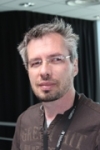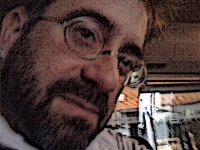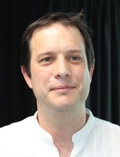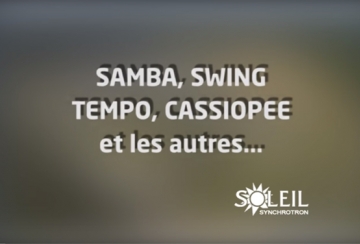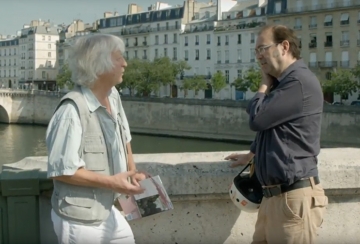
Welcome to Heliobio-logy!
 The HelioBio section at SOLEIL, being strongly inter-disciplinary and also at the junction where scientific measurement and project meet, is a natural focal point for the development of innovative methods in order to help advance the most difficult « external user » research. This is of critical importance in the highly competitive and labour intensive field of the biological sciences, where methodological improvements (which help make the most of the available samples) can make the difference between success and failure, or publishing first or second. Several very important publications, which would otherwise not have been achieved in such a timely fashion, have resulted from this symbiosis between beamline scientist and user at SOLEIL.
The HelioBio section at SOLEIL, being strongly inter-disciplinary and also at the junction where scientific measurement and project meet, is a natural focal point for the development of innovative methods in order to help advance the most difficult « external user » research. This is of critical importance in the highly competitive and labour intensive field of the biological sciences, where methodological improvements (which help make the most of the available samples) can make the difference between success and failure, or publishing first or second. Several very important publications, which would otherwise not have been achieved in such a timely fashion, have resulted from this symbiosis between beamline scientist and user at SOLEIL.

The team
 Gil Baranton |
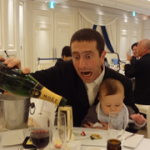 Leonard Chavas |
Gabriel David |
| Gavin Fox |  Alexandre Giulani |
 Patrick Gouhrant |
 Tatiana Isabet |
 Frederic Jamme |
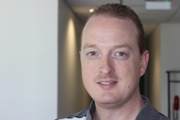 Cameron Kewish |
 Stephane Lefrancois |
|
 Javier Perez |
|
Blandine Pineau |
|
|
|
|
 Valerie Rouam |
|
|
Martin Savko |
|
|
|
Serena Sirigu |
|
|
|
|
|
|
HELIOBIO on twitter
| Scientific axes | Experimental techniques | Techniques of analysis | ||
|---|---|---|---|---|
Medicine
|
Biology
|
Agrosciences
|
Structure of biomacromolecules : X-Ray (Imaging), Christallography (Diffraction), SAXS (Scattering), SRCD APPI |
Imaging
Diffraction
Absorption
Scattering
|
| Spectromicroscopy Infrared, DUV, X-Ray |
||||
| X-Ray Imaging Coherent, Tomography, full field, scanning nanoprobres |
||||
Health
Deep PDT
Photodynamic therapy for deep seated malignancies where the X-ray as external light source is used. This unique therapy relies on activation of scintillation nanoparticles via x-ray excitation to produce optical emission that subsequently activates a photosensitizer (light sensitive drug). The activated photosensitizer produces singlet oxygen species resulting in cancer cell destruction.
Contact: Matthieu Refregiers
Biology
Characterisation of living fully-hydrated stem cells by vibrational microspectroscopy
Induced pluripotent stem cells are obtained by the genetic reprogramming of differentiated adult cells and could provide an unending reservoir of biocompatible cells for medical applications without the destruction of embryos. We work on methods for characterization of the cell ‘stemness’, for the detection of the potentially carcinogenic cells, and for quality control during reprogramming and differentiation in medically relevant cells using vibrational microspectroscopies, infrared and Raman.
Contact: Christophe Sandt
RNA degradation in trypanosomatids
Trypanosomes and leishmanias cause a number of serious diseases in humans and other animals. One of the remarkable features of these parasites is the lack of transcription control. The project aims at the structural characterization of proteins and complexes involved in the mRNA degradation in kinetoplastids, one of the mechanisms available for these parasites to regulate gene expression.
Contact: Beatriz Guimarães
All HelioBio News from Biology
Agroscience
Rapsseed Olesomes Extraction
Lipids of plant seeds are stored in specialized organelles called oleosomes structured by oleosin membrane proteins (S1 to S5). These proteins, for which a detailed 3D structure is unknown, are inserted into a monolayer of phospholipids.
Using SRCD we have shown, that recombinant oleosin S5, solubilized by polymeric surfactants called amphipols, contains more beta and less alpha structures as compared with the fold in SDS. The same work has now been done with S3 oleosin, the more abundant oleosin in plants. In order to decipher the in vivo fold, we studied the secondary structure of oleosins in oil bodies: purified from A. thaliana, from yeast, or artificial ones. SRCD resvealed the structural oleosome assembly and stability. The goal is to develop milder methods for seed oil extraction, and to design new and natural emulsion stabilizers.
Contact: Frank Wien
Laboratories
 Biology Laboratory
Biology Laboratory- Laboratoire Microfluidique
- Chemistry Laboratory





